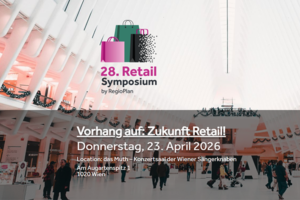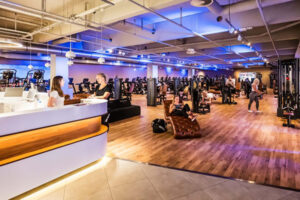This represents a massive increase (up by €2.3 billion or around 144%) in the volume invested compared to the same period in the previous year. The investment boom in the German retail real estate market has thus continued in 2017 and is expected again to hit record levels for the year as a whole. All this is reported in an analysis by the real estate consultancy CBRE.
International investors heavily involved
International investors contributed 48%, or almost €1.8 billion, of the total transaction volume. The share of foreign capital rose by €1.2 billion, or 190%, compared to the same period in the previous year. US investors were particularly active in buying German retail properties (17% of the total volume), followed by those from the United Kingdom (15%) and Switzerland (12%). US and UK investors were also very active on the selling side. With sales of €773 million and €532 million, respectively, they accounted for 20% and almost 14% of total trading volume.
“Germany’s excellent overall economic situation, with a continuously falling unemployment rate, rising real incomes, and an increase in private consumption, means that it is still the focus of global investors,” says Jan Linsin, Head of Research Germany.
Share of top locations continues to decline
Due to the limited availability of modern retail spaces and thus of investment products, especially in investment centers, the share of the top seven locations fell to nine percent (€334 million). The figure for the top locations the previous year was still 19%. The properties were predominantly acquired within portfolio transactions. The portfolio ratio among the top locations was 58%, well above the previous year’s figure of five percent. In the first three months of 2017, approximately €253 million were invested in big-box stores and retail parks.
“The current figures clearly reflect the product shortages in investment centers that had already become apparent in previous quarters. The limited supply of core products is clearly leading investors to seek alternative locations and assets. At the same time, we have for some time been observing that investors have become increasingly willing to accept higher risks in exchange for greater opportunities in one of the largest and most attractive retail markets in Europe, which is reflected in rising demand for value-add products,” said Jan Schönherr, Co-Head of Retail Investment.
Big-box stores dominate the market
Big-box stores and retail parks did not just dominate the market in investment centers—a large portion of retail investments were allocated to these types of properties nationwide. With a volume of almost €1.9 billion, this asset class accounted for 48% of the total transaction volume in the German retail real estate market. The properties were increasingly acquired as part of portfolio transactions, including the 10 German properties in IKEA’s pan-European portfolio and the Gravity Portfolio, purchased by Castlelake, with 68 retail properties.
In second place came shopping centers, which accounted for a good 21%, or €799 million, of the total volume in the first three months. The centers, which were mainly acquired in independent transactions, included properties in Dresden, Dortmund, and Wiesbaden, which provides an example of investors’ increased appetite for prospering regional centers and B-locations as attractive alternatives to the top locations. A total of €767 million were invested in other retail properties outside high-street locations in the first quarter of 2017, accounting for around 20% of the total transaction volume.
Package sales were considerably stronger at the beginning of 2017 than in the same period the previous year. The portfolio share in the first three months was 40%, meaning approximately €1.5 billion were invested in the form of package transactions. In the same period the previous year, the share of package sales was significantly lower, at just under 21%. Foreign investors in particular engaged in portfolio purchases in the German retail investment market and thus contributed to the significant increase in the portfolio ratio.
Returns continue to fall
Due to the demand overhang for German retail real estate, net initial yields remain under pressure. Yields for first-class commercial properties in top shopping locations thus fell further, to an average of 3.39%. The increased demand for shopping centers outside the main investment centers led to a further decline in the peak yields to 4.50% (down 10 basis points), while comparable products in the top markets remained at 4.00%. Heavy investor interest in big-box stores and food markets also led to a further yield compression in those areas. Yields fell by 25 basis points to 5.50% for first-class big-box stores with long-term leases and peak yields fell by 10 basis points to 5.50% for similarly coveted food markets.






